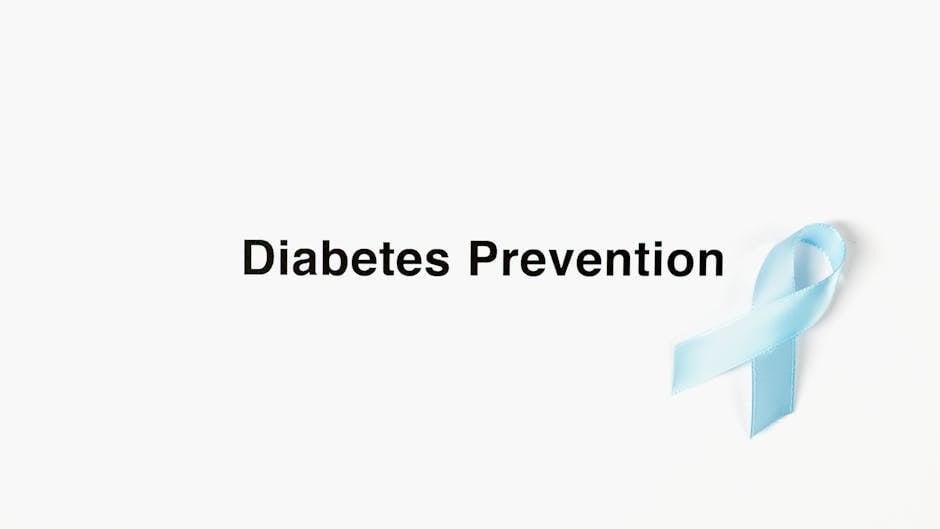Osgood-Schlatter Disease Exercises: A Comprehensive Guide
Welcome! This guide provides a comprehensive overview of exercises and rehabilitation strategies for managing Osgood-Schlatter Disease (OSD). We will explore range of motion, stretching, and strengthening exercises; Proper warm-up and cool-down techniques are also emphasized for effective OSD management.

Understanding Osgood-Schlatter Disease
Osgood-Schlatter Disease (OSD) is a common cause of knee pain in adolescents. It involves inflammation at the tibial tuberosity. Repeated stress from activities like running and jumping can contribute. Understanding the causes and symptoms aids effective management.
What is Osgood-Schlatter Disease?

Osgood-Schlatter Disease (OSD) is a condition affecting the tibial tuberosity, the bony bump located just below the kneecap where the patellar tendon attaches. It primarily affects adolescents during growth spurts when bones, muscles, and tendons are rapidly changing. OSD is characterized by pain, swelling, and tenderness at the tibial tuberosity, often exacerbated by physical activity.
The condition results from repetitive stress or tension on the patellar tendon, leading to inflammation and microtrauma at the growth plate of the tibial tuberosity. This growth plate is an area of cartilage near the end of the bone that contributes to bone lengthening. OSD is not a true disease but rather an overuse injury that typically resolves once growth is complete.
While OSD can be painful and limit participation in sports, it rarely causes long-term complications. Management focuses on pain relief, activity modification, and exercises to strengthen the surrounding muscles. Understanding the nature of OSD is the first step toward effective management and rehabilitation.
Causes of Osgood-Schlatter Disease

Osgood-Schlatter Disease (OSD) is primarily caused by repetitive stress and tension on the patellar tendon, which connects the quadriceps muscle to the tibial tuberosity. This stress occurs most often during periods of rapid growth in adolescents, typically between the ages of 10 and 14 in girls and 12 and 16 in boys. During these growth spurts, bones, muscles, and tendons may not grow at the same rate, leading to increased tightness and strain.
Activities that involve running, jumping, and quick changes in direction, such as basketball, soccer, volleyball, and gymnastics, can exacerbate this stress. These movements place significant demands on the quadriceps muscle, pulling on the patellar tendon and, consequently, the tibial tuberosity’s growth plate. Over time, this repetitive traction can cause inflammation, pain, and the characteristic bump associated with OSD.
Other contributing factors may include tight quadriceps and hamstring muscles, which increase tension on the patellar tendon. Understanding these causes is crucial for implementing preventive and management strategies.
Symptoms of Osgood-Schlatter Disease

The primary symptom of Osgood-Schlatter Disease (OSD) is pain and tenderness at the tibial tuberosity, the bony bump located just below the kneecap. This pain typically worsens during or after physical activity, especially exercises that involve running, jumping, or squatting. Adolescents may also experience pain when kneeling or putting direct pressure on the affected area.
Swelling and inflammation around the tibial tuberosity are common, and a visible bump may develop or become more prominent over time. The area may also feel warm to the touch. In some cases, pain may radiate to the surrounding knee area.
Symptoms often fluctuate, with periods of increased pain followed by periods of relative relief. Both knees can be affected, although it is more common for symptoms to occur in just one knee. Muscle tightness, particularly in the quadriceps and hamstring muscles, can contribute to the pain and discomfort. Early recognition of these symptoms is essential for proper management and preventing further aggravation of the condition. Seeking prompt medical advice is recommended.

Exercise and Rehabilitation for Osgood-Schlatter Disease
Rehabilitation is very important. This section details effective exercises for managing OSD. These exercises will help to improve range of motion, strengthen muscles, and reduce pain, all contributing to recovery.
The Role of Exercise in Managing OSD
Exercise plays a vital role in managing Osgood-Schlatter Disease (OSD) by addressing muscle imbalances and reducing stress on the tibial tuberosity. Targeted exercises can alleviate pain and improve function. Stretching exercises, particularly for the quadriceps, hamstrings, and calves, are crucial for reducing tension around the knee joint.
Strengthening exercises, focusing on the hips, thighs, and core, provide stability and support, minimizing strain on the affected area. A well-structured exercise program can facilitate healing and enable a return to activity.
Weight-bearing exercises should be approached cautiously, with modifications as needed to avoid exacerbating symptoms. Consistency and proper form are essential for maximizing the benefits of exercise while minimizing the risk of further irritation.

Range of Motion and Stretching Exercises
Range of motion and stretching exercises are fundamental components of an Osgood-Schlatter Disease (OSD) rehabilitation program. These exercises aim to improve flexibility, reduce muscle tightness, and alleviate stress on the tibial tuberosity.
Gentle stretching of the quadriceps, hamstrings, and calf muscles can help to decrease pain and improve overall knee function. Hold each stretch for 20-30 seconds and repeat several times throughout the day.
Proper warm-up before stretching is crucial to prepare the muscles and prevent injury. Avoid ballistic stretching, which involves bouncing movements, as this can exacerbate OSD symptoms. Focus on slow, controlled stretches that target the affected muscle groups.
Hamstring Stretches
Hamstring stretches are an essential part of managing Osgood-Schlatter Disease, as tight hamstrings can increase stress on the knee joint. One effective stretch is the lying hamstring stretch. Lie on your back with your buttocks close to a doorway, extending one leg straight out along the floor. Raise the other leg, supporting it with a towel or your hands, until you feel a gentle stretch.
Another variation is the seated hamstring stretch; Sit on the floor with one leg extended and the other bent. Reach towards your toes, keeping your back straight to maximize the stretch.
Hold each stretch for 20-30 seconds, repeating several times a day to improve flexibility and reduce tension around the knee.
Quadriceps Stretches
Quadriceps stretches are crucial for alleviating tension and improving flexibility in the front of the thigh, which can significantly benefit individuals with Osgood-Schlatter Disease. A common and effective stretch is the standing quadriceps stretch. Stand near a wall or chair for balance. Grab your ankle and gently pull your heel towards your buttock until you feel a stretch in the front of your thigh.
Another useful stretch is the lying quadriceps stretch. Lie on your side and perform the same action, pulling your heel towards your buttock. Use a towel if you can’t reach your ankle.
Hold each stretch for about 20-30 seconds, repeating multiple times daily to enhance muscle flexibility and reduce knee stress.
Calf Stretches
Calf stretches play a vital role in managing Osgood-Schlatter Disease by reducing tension in the calf muscles, which can indirectly impact knee stress. The gastrocnemius stretch targets the upper calf muscle, while the soleus stretch focuses on the lower calf.
To perform the gastrocnemius stretch, stand facing a wall with one leg slightly behind the other. Keep your back leg straight and heel on the ground, and lean forward until you feel a stretch in your upper calf. For the soleus stretch, perform the same movement but bend your back knee slightly to target the lower calf muscle.
Hold each stretch for 20-30 seconds and repeat it multiple times daily to improve flexibility. Regular calf stretching helps to alleviate tightness and support better knee function.
Strengthening Exercises
Strengthening exercises are crucial for supporting the knee joint and managing Osgood-Schlatter Disease. These exercises help to build muscle strength around the knee, which can reduce stress on the tibial tuberosity. Wall squats are a great starting point, engaging the quadriceps and glutes without placing excessive pressure on the knee.
Hip strengthening exercises, such as hip abductions and extensions, are also important as they improve overall lower body stability and alignment. Additionally, resisted knee extensions can be performed using resistance bands to gradually increase quadriceps strength.
It’s important to perform these exercises every other day, focusing on quality over quantity. Ensure proper form to avoid aggravating the condition and gradually increase the intensity as tolerated.

Wall Squats
Wall squats are a fantastic exercise for strengthening the quadriceps and glutes while minimizing stress on the knee joint, making them ideal for individuals with Osgood-Schlatter Disease. To perform a wall squat, stand with your back against a wall, feet shoulder-width apart and slightly away from the wall. Slowly slide down the wall, bending your knees until you reach a comfortable squatting position, ideally with your thighs parallel to the ground.
Hold this position for a few seconds, then slowly slide back up to the starting position. Ensure that your knees stay behind your toes throughout the exercise to avoid excessive pressure on the knee joint. Begin with a few repetitions and gradually increase the number as your strength improves. Consistency is key, so aim to perform wall squats every other day as part of your rehabilitation program.
Hip Strengthening Exercises
Strengthening the hip muscles is crucial for managing Osgood-Schlatter Disease as strong hips can help stabilize the pelvis and reduce stress on the knee joint. Effective hip strengthening exercises include hip abductions, hip extensions, and bridges. For hip abductions, lie on your side with your top leg straight. Slowly lift your top leg towards the ceiling, keeping it straight, and then lower it back down.
Hip extensions can be performed by standing and gently extending one leg straight back behind you, squeezing your glutes. Bridges involve lying on your back with your knees bent and feet flat on the floor. Lift your hips off the ground, engaging your glutes and hamstrings, and then lower them back down. Aim for controlled movements and proper form to maximize effectiveness and prevent injury. These exercises should be done every other day.
Resisted Knee Extension
Resisted knee extension exercises are valuable for strengthening the quadriceps muscles, which play a significant role in knee stability and function. To perform resisted knee extensions, you’ll need a resistance band or weight machine. Start by sitting on a chair with your feet dangling; Secure the resistance band around your ankle or position yourself on the weight machine.
Slowly extend your knee against the resistance, straightening your leg as much as possible. Hold the extended position for a moment, then slowly lower your leg back to the starting position. Ensure controlled movements throughout the exercise to maximize muscle engagement and minimize risk of injury. Perform these exercises every other day, focusing on proper form and gradually increasing the resistance as your strength improves. This will aid in supporting the knee joint.

Important Considerations
Managing Osgood-Schlatter requires careful attention. Avoid activities that worsen pain. Always warm up before exercise and cool down afterwards. If pain persists or worsens, seek guidance from a healthcare professional for personalized advice and treatment options.

Avoiding Aggravating Activities
When dealing with Osgood-Schlatter Disease, it is crucial to recognize and avoid activities that can exacerbate the condition. Specifically, activities that place significant stress on the knee joint should be approached with caution or temporarily limited. These may include kneeling, jumping, deep squatting, stair climbing, and running, particularly on hard surfaces.
Weight-bearing exercise can potentially worsen Osgood-Schlatter symptoms, so it’s essential to monitor pain levels and adjust activity accordingly. High-impact sports or exercises that involve repetitive knee movements should be carefully considered.
It is important to listen to your body and avoid pushing through pain. Modifying activities to reduce stress on the tibial tuberosity can help manage symptoms and prevent further irritation. Consulting with a physical therapist or healthcare professional can provide personalized guidance on activity modification and alternative exercises to maintain fitness while minimizing stress on the affected area. Consider low-impact options like swimming or cycling.
Warm-up and Cool-down
Prioritizing a proper warm-up and cool-down routine is essential in managing Osgood-Schlatter Disease and preventing aggravation of symptoms. A thorough warm-up prepares the muscles for activity, enhancing flexibility and reducing the risk of injury. This should include light cardiovascular exercises such as brisk walking or cycling, followed by dynamic stretching exercises targeting the thigh, hamstring, and calf muscles.
Dynamic stretches could include leg swings, gentle knee bends, and ankle rotations. The aim is to gradually increase blood flow and muscle temperature, preparing the knee joint for exercise.
Following any exercise session, a cool-down is equally important. This involves gentle static stretching, holding each stretch for 20-30 seconds. Focus on the quadriceps, hamstrings, and calf muscles to improve flexibility and reduce muscle soreness. A proper cool-down helps the body gradually return to its resting state, minimizing stiffness and promoting recovery. Remember to listen to your body and avoid overstretching, ensuring the stretches are pain-free.
When to Seek Professional Help
While many cases of Osgood-Schlatter Disease can be managed with home exercises and activity modification, it’s crucial to recognize when professional help is necessary. If your child experiences persistent or worsening knee pain that interferes with daily activities, it’s time to consult a doctor or physical therapist.
Seek medical advice if there’s significant swelling, redness, or warmth around the tibial tuberosity, as these could indicate infection or other complications. Additionally, if the pain doesn’t improve after several weeks of consistent home treatment, or if it’s accompanied by a limp or difficulty bearing weight, a professional evaluation is warranted.
A physical therapist can provide a personalized exercise program tailored to your child’s specific needs and monitor their progress. They can also assess biomechanics and identify any underlying issues contributing to the condition. Remember, early intervention can help prevent long-term complications and ensure a safe return to activity.

